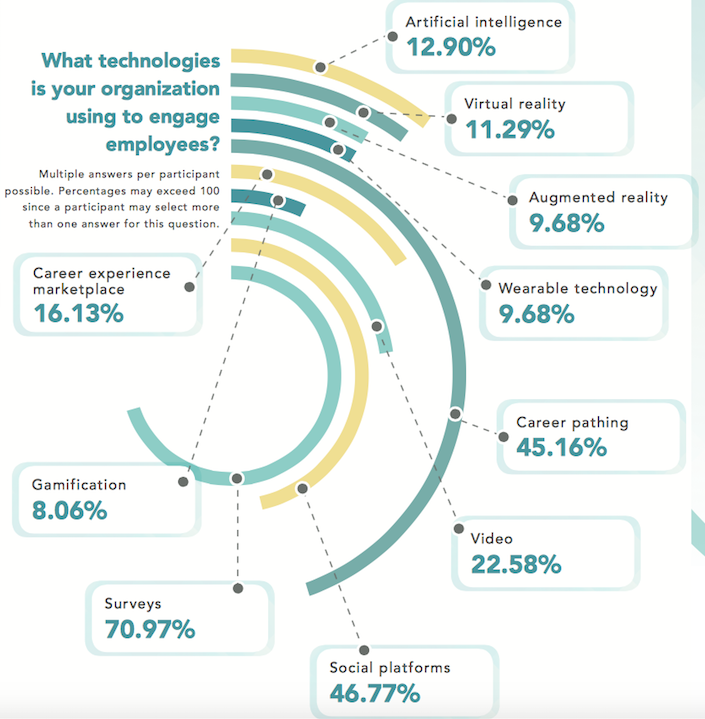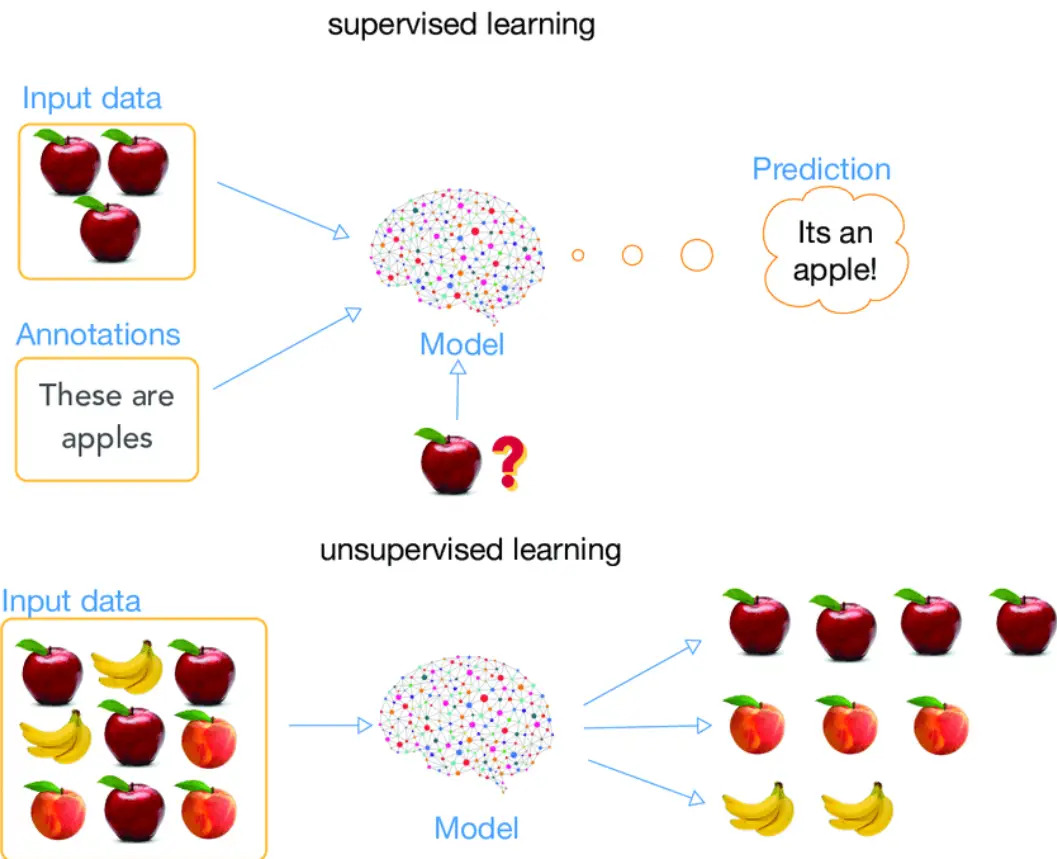AI algorithms has the capability to identify which employees are at risk of quitting their jobs and provide the data necessary to help employers develop retention strategies. By assessing employee behavior, sentiment analysis and organizational metrics, predictive analytics can give businesses a valuable edge in tracking attrition risks.
Understand the data needed to identify attrition risks
To successfully deploy AI to identify attrition risks, businesses first need to understand the data they will use to produce meaningful insight. This can include employee performance metrics, such as attendance, engagement and job satisfaction surveys. Additionally, manager verbatim reviews and feedback in order to gain insight into team dynamics can be useful inputs for AI-driven models to identify which employees may leave their current role in the near future.
The data that is used to train the AI should also reflect any changing internal or external conditions the business may be dealing with. For instance, if there is an industry-wide increase in salaries and employee benefits, AI can be successful at predicting who will be receptive to switching positions. Conversely, during times of economic downturns or budget cuts, AI might more accurately predict which employees’ risk factor may increase due to frustration with their current working environment. By understanding which data is relevant to attrition risks and consistently updating it AI solutions can aid businesses in their risk assessment measures.
Companies can also use AI to monitor employees’ performance over longer periods of time in order to better identify an individual’s career and job satisfaction needs. By using sentiment analysis, the AI can identify changes in sentiment and match them with individual employee details.
This allows businesses to evaluate their most vulnerable employees before any rash decisions are made, allowing for more efficient performance reviews, training sessions or even promotions and bonuses as appropriate. With reliable data backing up predictions made by AI, companies can rest assured that the best possible outcomes will be had from personnel related decisions.
Implement AI algorithms to analyse employee data.
AI algorithms are now being used to analyse employee data and analyse the factors driving attrition. Complex algorithms can be used to process datasets of a large number of employees and detect statistically significant relationships between factors like job performance, satisfaction and length of tenure. This will allow employers to identify patterns that could indicate a potential employee turnover.
AI can also assess if certain traits are correlated with the propensity to quit. For instance, machine learning models can analyse differences in how different generations respond to job satisfaction. This type of analysis could help employers create strategies to retain employees and reduce attrition rates. Additionally, AI algorithms can be used to evaluate candidates’ resumes during the recruitment process and suggest suitable profiles for particular roles. By using AI-driven solutions, companies can proactively ascertain an employee’s potential for leaving their position and take appropriate action to counter it.
AI can be used to analyse employee data collected over time in order to forecast attrition, identifying traits and factors that are correlated with the propensity to quit. By doing so, a company will understand what kind of employees are more likely to stay employed for longer periods of time and could curb future resignations. Companies should also consider new data sources such as surveys and social media conversations for insights into employee sentiment.
Furthermore, AI-driven applications of analytics tools can uncover new correlations between employee commitment and job performance, giving employers an idea of which strategies they should implement to improve retention levels.
Measure the accuracy of the AI algorithm results
In order to maximize the accuracy of the AI algorithm results, it’s important to measure their accuracy over time. You need to tune them as necessary. Employers should evaluate their AI algorithms and check how accurate they are in predicting attrition. How it can detect bias and identify any issues that could lead to inaccurate results. They can also use the results of these evaluations to tweak the algorithm parameters to improve their accuracy.
Employers should also pay attention to the features that the AI algorithm is focusing on. The algorithm may be relying on certain characteristics or metrics that may be biased and lead to inaccurate results. For example, employers should consider including things like job satisfaction scores into the algorithm in order to better measure if an employee is likely to quit. Additionally, employers can use their own datasets or external ones in order to get more accurate information and improve the algorithm’s accuracy.
By regularly measuring the accuracy of their algorithm results, employers can make sure they are up-to-date and trustworthy with regard to predicting attrition rates.
Employers should also use their AI algorithms to monitor employees, spotting any potential changes in job satisfaction or job performance. With employee data at their fingertips, employers are able to track and measure certain patterns that could indicate a change in behavior. By connecting this data with the algorithm, employers can refine the algorithm over time and make sure it is more accurate when predicting if an employee is likely to quit.
Additionally, employers should double-check their results against other data sources and use visual tools such as graphs to illustrate how the AI is making predictions. This way, employers will have peace of mind that their AI algorithms are accurately predicting those who might be looking for new opportunities.
Train AI models using supervised and unsupervised learning techniques
AI models can be trained to recognize different patterns of employee behavior, allowing them to accurately predict attrition. In order to do this, companies need to employ both supervised and unsupervised learning techniques. Supervised learning techniques involve the use of labeled data. This includes previous employee performance data and other features that can help the model identify potential attrition risks. Unsupervised learning techniques on the other hand, work with unlabeled datasets like employee surveys responses or video records. Here the patterns can be identified even without labels
AI-driven attrition prediction models can help companies by creating employee profiles and tracking them over time. This data can be used to identify correlations between employee behavior and their risk of leaving the company. Employers are then provided with predictions based on patterns seen over time in the vast data. The Employee data collection is important to build the AI models. To check when an employee is likely to leave, providing pre-emptive engagement measures that can increase retention rates. Through supervised and unsupervised learning techniques, employers can ensure that they are always one step ahead of potential attrition woes.
Supervised Learning Algorithms
Supervised learning algorithms, such as Support Vector Machines and decision trees, are effective for classification tasks. They can accurately predict when a certain event is likely to occur. Employers can feed data collected from employees into the model to detect patterns. Unsupervised learning, on the other hand, can be used to detect correlations between features. We don’t need to have prior knowledge of which will be important for predicting employee churn.
You can cluster customer records based on customer history. Or using anomalies detection methods like Isolation Forest and Local Outlier Factor (LOF). Using this employers can identify where problems may arise in terms of employee attrition. AI-driven attrition prediction models are highly advantageous, providing an efficient way to analyse huge amounts of data quickly. Also it can help mitigating any biases that could interfere with future hiring decisions.
Utilize AI-driven insights for proactive retention strategies
Once AI models have accurately identified likely attrition risks, employers can use the insights to develop proactive strategies. This can be achieved with the goal of reducing employee turnover. For instance, employers can identify employees who are likely to leave, and create tailored retention programs. Programs that would meet their needs. They can also improve their hiring policies and practices.
They can identifying which job applicants are more likely to stay longer. In Unstructured industries such as Gems, Jewelry and Precious Metals Industry, the Attrition Rates can be minimized. Using this Approach, employee engagements can improve.
AI-driven insights can also be leveraged for managing human resources better. While many companies are investing in data analytics, its potential for keeping teams intact often goes untapped. AI models can be leveraged to analyze various employee datasets and make HR decisions based on the results. Results from determining which employees need more training or support. This is to predicting which ones are likely to quit in the near future. Companies can use this valuable information to ensure they maintain a stable workforce that is fulfilled and motivated.
AI algorithms can be used to detect irregularities in employee behavior that HR managers may not catch. For instance, some employees might be sending out resumes more frequently. Or they receiving multiple calls from recruiters to their work phones. Both of which could signal they are unhappy and planning to leave soon. Analyzing employee data such as performance metrics, feedback scores and job titles can also reveal patterns. Patterns that indicate an individual’s high risk of turnover. This knowledge can help companies take action to retain those key performers before it’s too late.
Final Thoughts
It is clear that Artificial Intelligence can be used to gain useful insights on employee data and predict employee attrition. AI models can help business owners, managers and HR departments identify employees. Employees who are at risk of quitting their job before it happens. This helps them to take proactive steps to retain talent. Furthermore, AI can provide a cost-effective solution for companies looking to optimize their workforce. Companies should consider investing in AI technology to leverage the benefits of predictive analytics.






